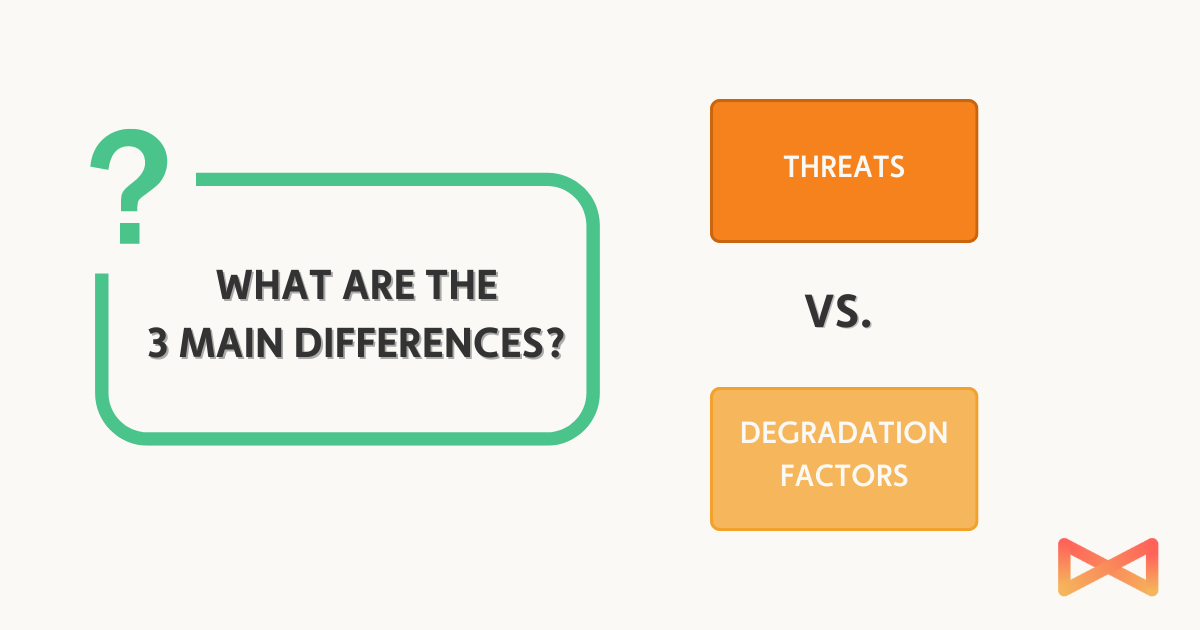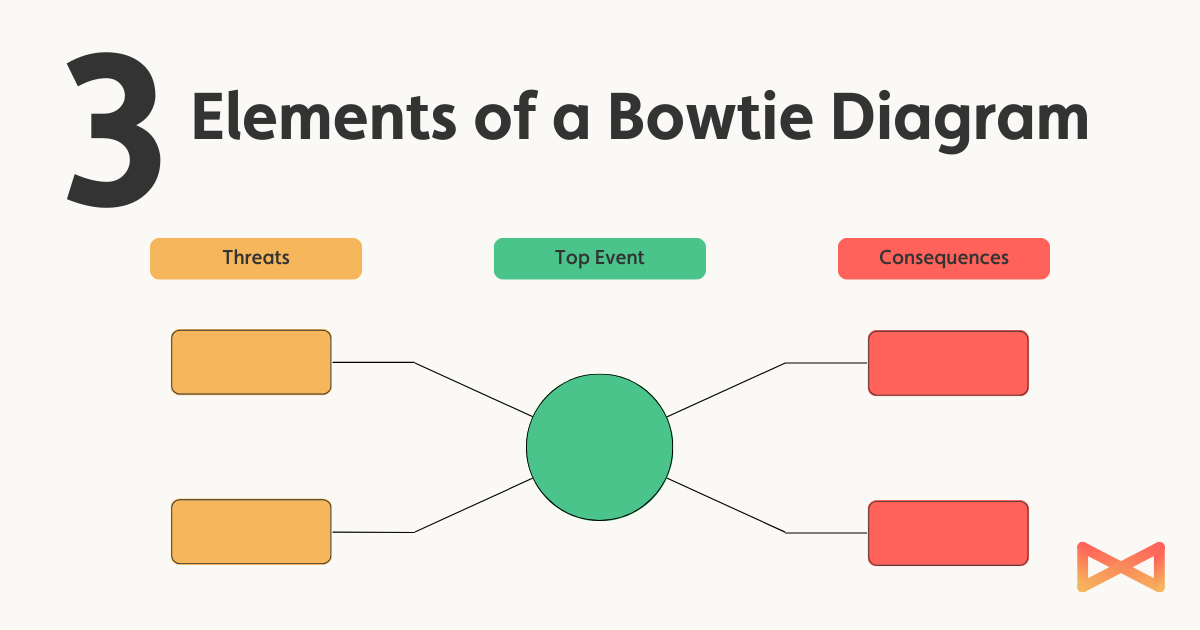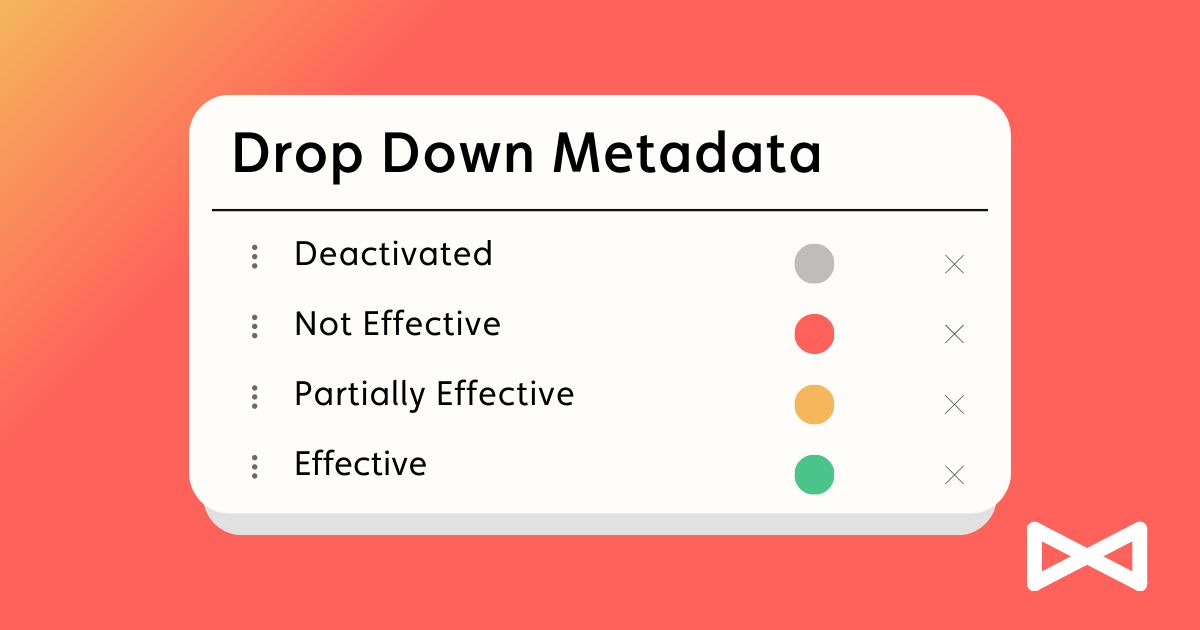Bowtie diagrams are easy to build, but one of the biggest challenges people face is correctly describing their elements. This means multiple barriers can get combined into one, a top event may actually be a consequence, or there could be a lack of specificity when it comes to the hazard. All of these can have a huge impact on the quality of your bowtie diagram.
In this article, we’re going to nail down the exact differences between threats and degradation factors as this is such a common mistake that can have a massive impact on the effectiveness of your diagram.
Definitions
Let’s start with the basics. A threat is an event, activity, or object with the potential to cause the top event, leading to undesired consequences. On the other hand, a degradation factor, also called an escalation factor, is a condition capable of reducing the effectiveness of the attached barrier. Most incidents result from multiple barrier failures, weakened long before the actual event by degradation factors.
Threats and degradation factors share common ground; both increase the likelihood of undesired consequences but are equipped with their own barriers or controls to stop them.
That said, there are three main differences:
- Dependency on a Barrier
A degradation factor relies on a barrier, for instance, ‘blocked emergency exit’ can’t be a threat; instead, ’emergency exit’ is the barrier, and a degradation factor compromising it could be ‘equipment blocking emergency exit.’
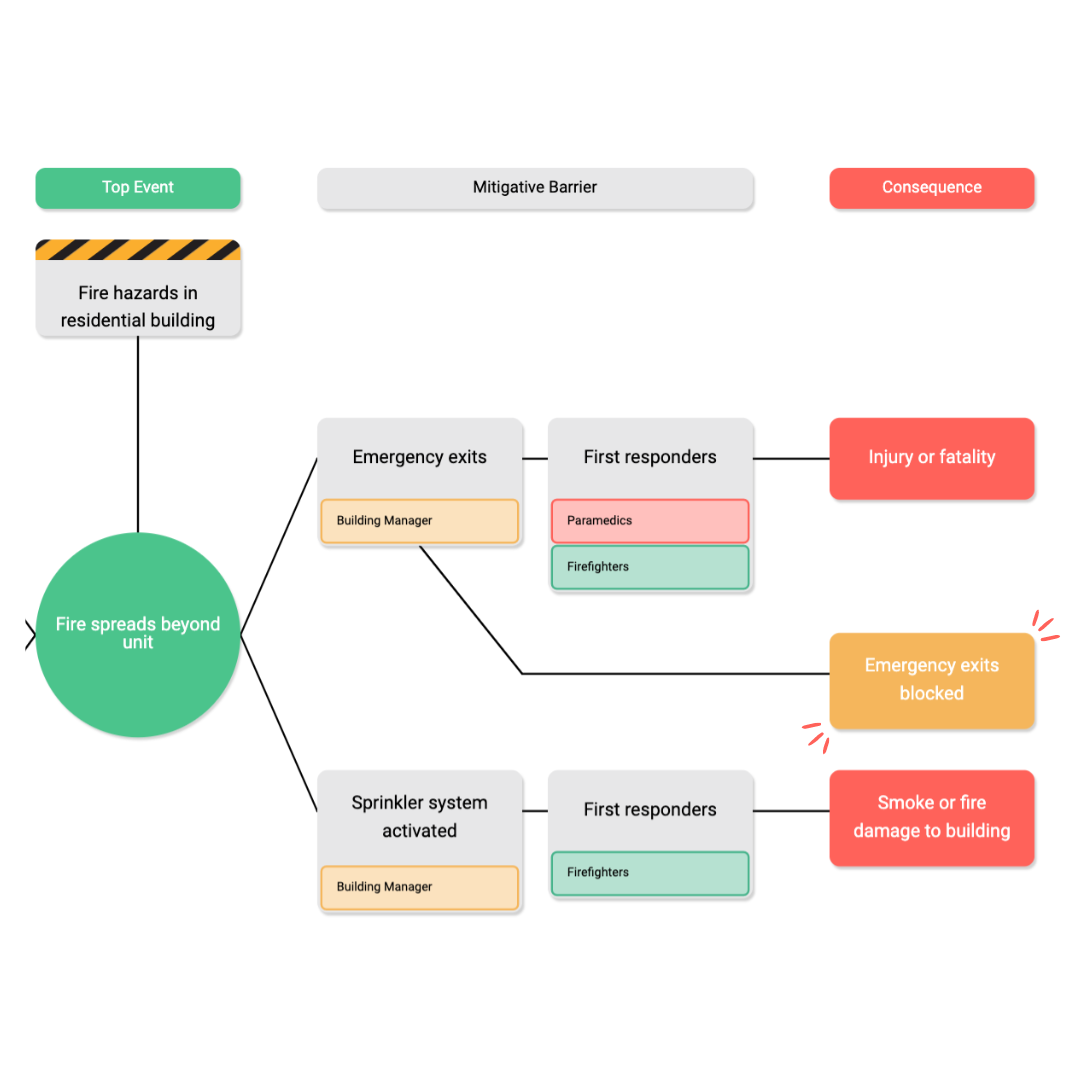
In contrast, a threat is independent. It should be evident to the reader how a threat directly leads to the top event.
- Direct Triggering Power
A threat must possess the power to directly trigger the top event, representing a condition or event that could lead to a loss of control over the hazard.
A degradation factor, however, lacks the power to directly cause the top event; it increases the likelihood of reaching undesired consequences by weakening a barrier.
- Diagram Placement
Threats exclusively occur before the top event, as they are potential causes leading to the event.
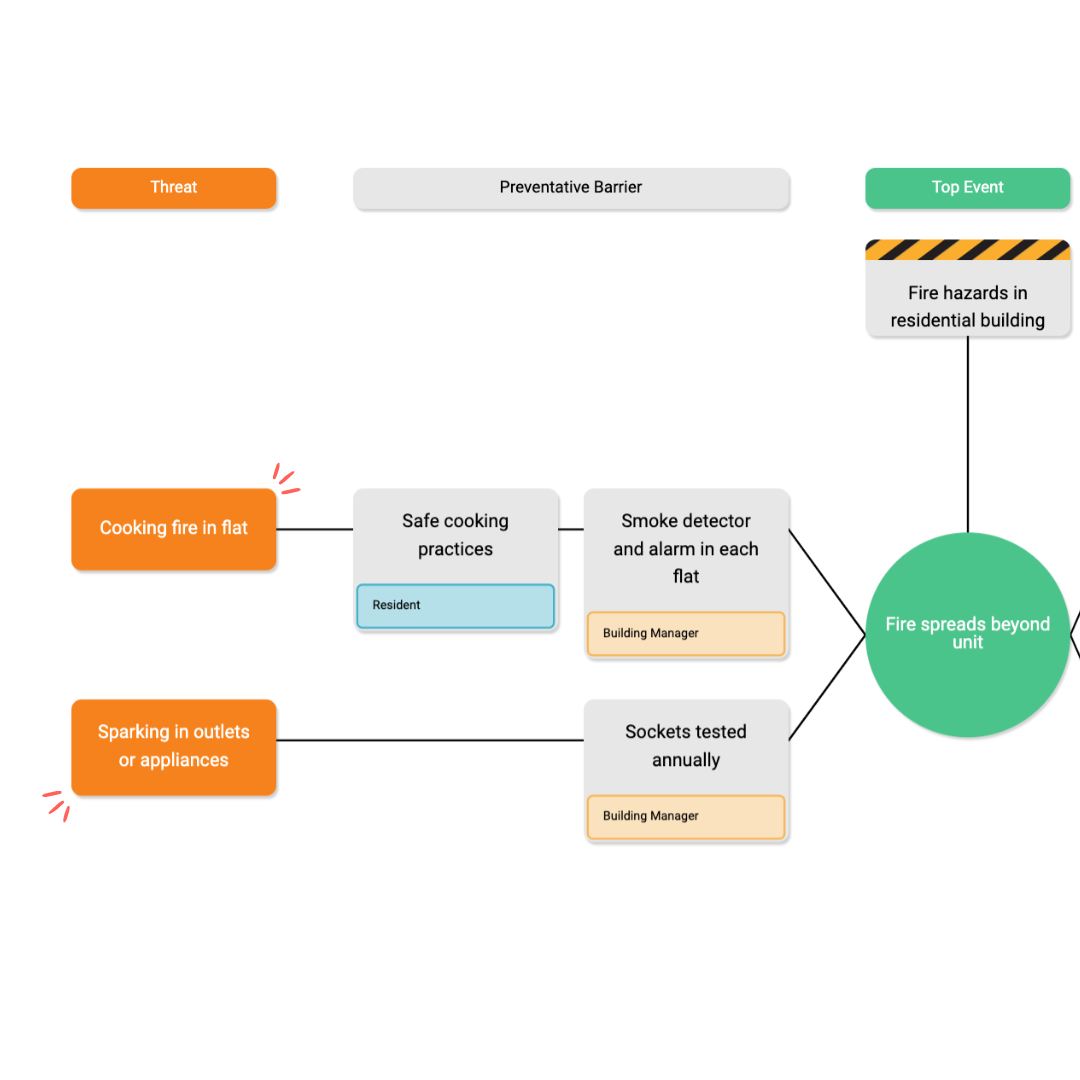
Degradation factors, on the other hand, are found on either side of the bowtie diagram, attached to both preventative and mitigative barriers.
In the grand scheme of a bowtie diagram, threats and degradation factors both play crucial roles. While degradation factors should be used sparingly, threats are fundamental to the diagram’s structure. Including degradation factors is beneficial, but without threats, the diagram becomes one-sided, resembling more of a consequence analysis or an ‘event tree.’
So there you have it, the main differences between threats and degradation factors.
Have any questions? You can reach us at support@salus-suite.com.


